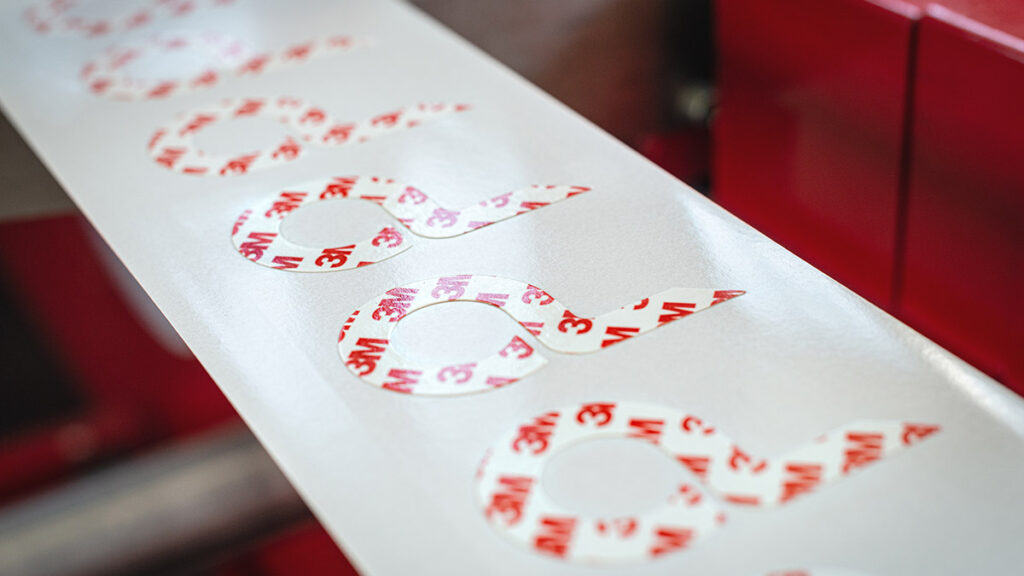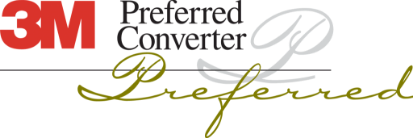
Workshops
Cutting rolls
Possible to cut rolls to size from 2mm up to 1.500mm with a tolerance of ± 0,2mm
Die-cutting
With flatbed die-cutter
With a die-cutting area of 300mmx300mm, a maximum of 150 strokes per minute and a relatively low set-up cost, this die-cutting technology is suitable for projects that do not develop large quantities and for shapes that are compatible with a blade die. It is suitable for both thin ribbons from 0.05mm and thicknesses of up to 5mm.
With rotary die-cutter
This technology is particularly suitable for high-volume projects as it has a die-cutting capacity of up to 100 metres of tape per minute and also allows greater freedom of shaping in the construction of the die. Suitable for thin ribbons up to a maximum thickness of 1.5 mm.
With laser technology
This is the most innovative technology in the field of ribbon customisation, with a very high precision cut that overcomes all the shaping limits of mechanical flatbed and rotary dies. Suitable for projects that do not develop high quantities, it is ideal for both thin and thick ribbons, with a die-cutting area of 600mmx1,200mm.
Cutting and rewinding
We can supply smaller roll lengths than the original roll with the option of using 1-inch or 3-inch cores for the final roll.
Coupling and die-cutting
On all our products, we can supply the roll or die already laminated to the material to be bonded.
Die-cuts can be customised to speed up and make your work more precise by adapting to your specific production requirements.
- Finger lift
- Overflowing liner
- Application tape
- Centring holes
- Continuous liner
- Single piece cutting
- Pretreatment
Finger lift
An overflowing protective paper tab that can be used by the operator to peel the adhesive more quickly and easily. It is also used to allow the operator to remove the adhesive from the underlying silicone paper, apply it and peel it off in a single step without touching the adhesive.
Overflowing liner
Rolls or strips of double-sided tape supplied with a liner overlapping the underlying adhesive. This makes it easier to peel off the double-sided adhesive strips applied to the material.
Application tape
This technique is ideal for facilitating the positioning and peeling of those adhesive applications that involve predetermined spacing between a series of die-cuts, which may be shapes or letters.
Centring holes
In order to achieve maximum precision when applying the adhesive tape, die-cuts are produced on a sheet into which holes are cut. These holes are made using a specially produced template to ensure total precision when applying the adhesive.
Continuous liner
This is a useful technique when, due to shaping characteristics, the die-cut adhesive has thin brittle points or complex cut-outs. In this case, the die-cut adhesive is supplied protected by a sheet of silicone paper overflowing on all sides to make the peel-off process quick and easy without creating any deformation in the underlying adhesive to be applied.
Single piece cutting
The die-cuts can be supplied each on a single sheet or in groups on each sheet depending on the customer’s request.
Pretreatment
The dies can be supplied on a roll with a cross-hatch engraved on the paper that serves as an invitation to tear, which is useful when delivering different units of dies to different operators.


